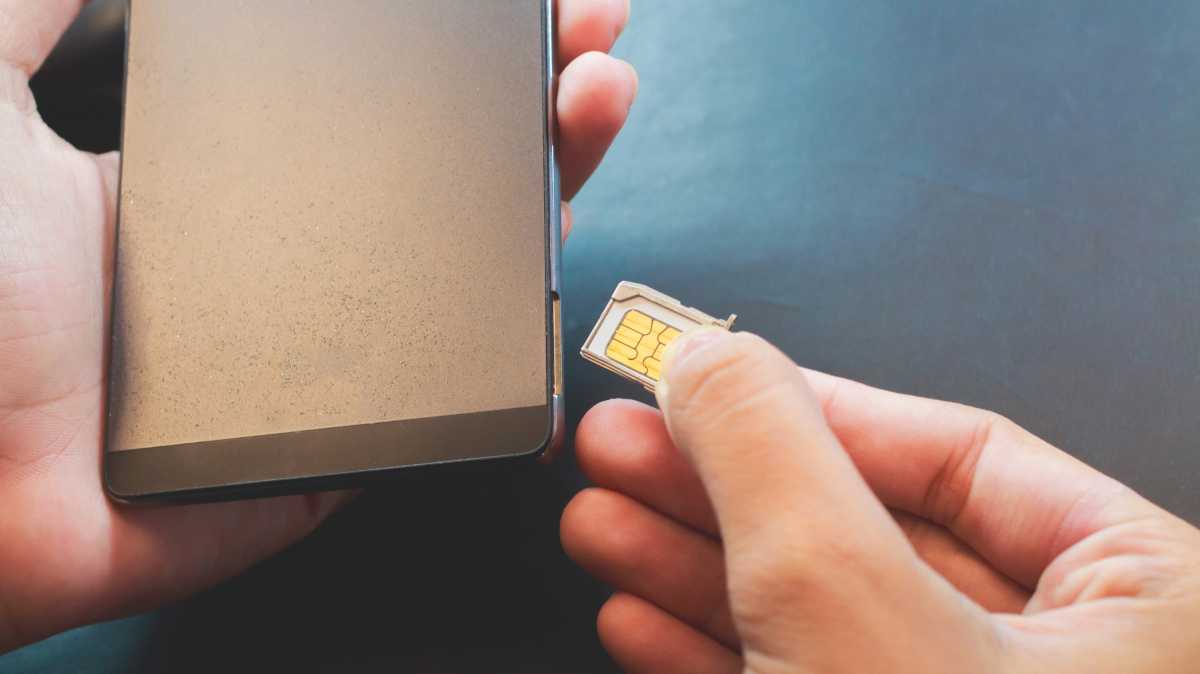The SIM in ‘SIM card’ stands for ‘subscriber identity module.’ These tiny plastic chips hold data for your phone – such as your phone number, contacts, messages and photos.
Not so long ago, they were the only way to connect your phone with your local mobile network for calls, texts and mobile data. However, as time goes on, more and more phone suppliers are now shipping phones with eSIMs.
An eSIM, or ‘embedded SIM,’ replaces the need for an old physical SIM card. It’s essentially an electronic SIM card that’s been embedded into your phone at the time of your phone’s manufacture. Learn more in our separate article: What is an eSIM?
If you live in the UK, the big four of EE, O2, Vodafone and Three already offer eSIM, giving their customers additional options and freedom. The same applies if you use AT&T, Verizon and T-Mobile offer in the US.
Recent models of iPhone, for example, only ship with eSIM in the US. But availability via some MVNOs, or piggyback networks as they’re often known, can vary.
However, there are plenty of factors to consider when it comes to eSIMs. Here are the main advantages and disadvantages compared to a regular SIM card.
Advantages of using an eSIM
1. You can have more than one phone number
Like using a dual-SIM phone, having an eSIM enables you to have multiple phone numbers. The main benefit of this is you can make and receive calls and texts with either number, so you can more easily manage your incoming and outgoing communications.
For this reason they can be highly useful for separating your personal and work without needing to have multiple device. You can also use an eSIM in conjunction with a physical SIM card, so they allow you to personalise your connectivity across your devices.
2. eSIM is easier to activate than SIM card
While physical SIM cards need to be inserted into your phone for them to be activated, a task often requiring the hand steadiness of a surgeon, an eSIM can be activated simply by scanning a QR code that registers your eSIM profile with your mobile network.
Some networks may require you to also enter a pin number, but this process is usually very quick.

Dominik Tomaszewski / Foundry
3. eSIM makes changing network providers easier
Having a phone with an eSIM allows you to change networks much faster, since it eliminates the need for you to get a new plastic SIM card.
That means not having to visit your network’s retailer or to wait for a card to arrive by post.
By using an eSIM in your phone, you can choose your service provider and then connect to their network remotely, getting the information you need to connect over the phone or online.
4. You won’t have to permanently disable accounts
eSIMs can store multiple profiles, meaning you can temporarily switch between networks and back without having to permanently disable accounts.
This feature is especially useful while travelling, allowing you to stay connected to a network wherever you go.
It’s also often a more affordable alternative for activating global roaming functionality.
5. eSIM takes up less space inside your phone
Nano SIMs are the cards currently in use in most modern smartphones. These tiny cards measure approximately 8.8mm, but eSIMs are even smaller at just 4mm.
The smaller size means phone manufacturers have more space to add extra features, like increased battery capacity or better cooling system.
It also allows them to improve a phone’s IP rating against water and dust, since the absence of a SIM card slot means there are less points at which water and dust can get inside.

Stock Foto.Touch / Shutterstock
Disadvantages of using an eSIM
1. eSIM takes longer to restore in a new phone
If your phone breaks, chances are your tiny plastic SIM that was tucked away inside your phone will be relatively unscathed. You can simply pull it out and insert it into a new handset – but this is not the case with an eSIM.
You will need to retrieve and download your eSIM profile from the cloud, which is considerably more time consuming to do. It also takes longer than it would take to transfer into a new handset when you upgrade.
2. You can be more easily tracked by network providers
Users worried about privacy can easily prevent their mobile network from tracking their location by removing their phone’s physical SIM card.
However, since eSIMs can’t be removed and are hard-wired into the device, eSIM user’s phones will be constantly active on their carrier’s network, and more easily traceable.

Google Maps
Diego Thomazini/Shutterstock.com
3. Increased likelihood of hacking
From a security perspective, eSIMs are generally very safe in that they can’t be physically removed and placed in other devices by thieves. They also can’t be programmed to request verification from operators whenever someone tries to change a user profile.
However, they aren’t completely safe from fraud, since hackers often go to great lengths to hack into vulnerable mobile carriers’ systems to retrieve user profiles or information.
How can I get an eSIM?
It is quite simple, just report to your network provider and ask for the physical SIM card to be replaced with an eSIM. In the UK, carriers like EE, O2, Vodafone and Three provide eSIMs, while in the US, AT&T, Verizon and T-Mobile offer them.
However, you will also need a compatible phone that supports eSIM. Initially, flagship phones from companies like Apple, Google and Samsung were first to embrace eSIM, but now many mid-range phones also support it.
For example, affordable eSIM models include the iPhone SE (2022), the Pixel 7a, and the Galaxy A54 5G.
If you want to know more about what eSIM is and how it works, be sure to check out our dedicated article.

